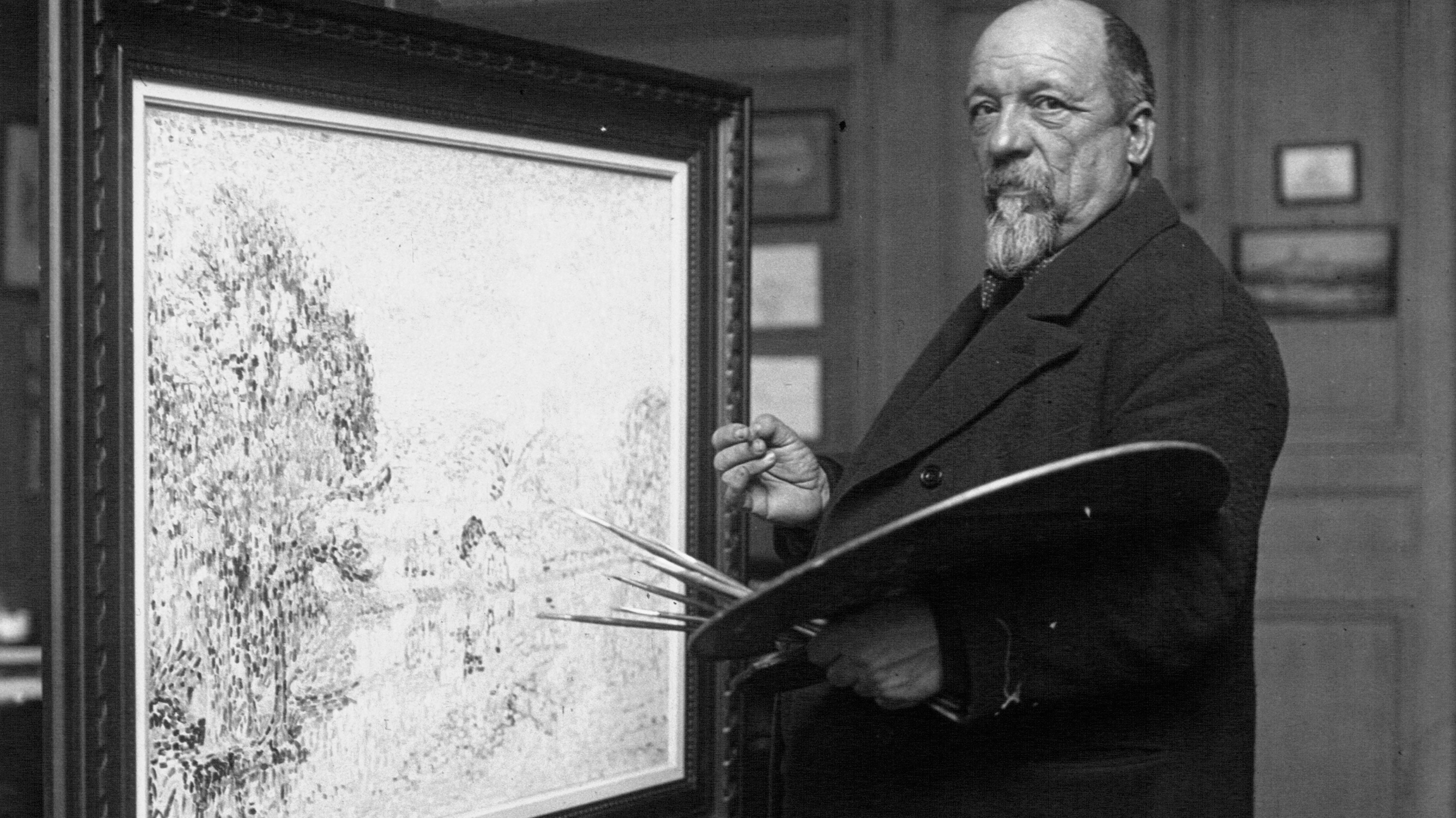
Fallingwater House by Frank Lloyd Wright; Photograph by Robert P Ruschak
(Organic Design: Drawing Inspiration from Nature - dans le gris)
What is Organic Design?
(Organic Design: Drawing Inspiration from Nature - dans le gris)
Architect Frank Lloyd Wright pioneered organic design, introducing the term "organic" into his architectural philosophy. While the common usage of "organic" typically refers to characteristics of animals or plants, Wright's organic architecture takes on a new meaning. He believed in fostering harmony between people and nature, viewing architecture as a means to achieve a perfect balance between the manmade and natural worlds. This belief manifested through the use of natural materials and smooth, rounded forms.
In brief, organic design is an approach that draws inspiration from the natural world, incorporating elements and principles derived from nature into various creative disciplines. This design philosophy aims to emulate the organic forms, patterns, and processes found in the environment to create aesthetically pleasing and functional products, spaces, or artworks.
The early 1930s marked a drastic shift in design approaches, with the emergence of new visual languages that contrasted with the ideals of the Modern Movement. The organic design style became a mainstay in mid-century modern interior design and architecture, a movement that gained prominence in the United States from the 1940s through the 1960s.
(Organic Design: Drawing Inspiration from Nature - dans le gris)
The Characteristics of Organic Design
Organic design has specific features that make it a unique and nature-inspired approach to creativity. Below, we list some of the primary characteristics of organic design; through these features, you can easily recognize organic design.
(Organic Design: Drawing Inspiration from Nature - dans le gris)
Inspired by Nature
It is obvious that organic design is consistently inspired by nature. Rooted in nature's timeless principles, Organic Design transcends mere inspiration to embody a philosophy that champions simplicity and unity with the environment. This design approach seeks to create products integrated into the natural world, promoting a sense of balance and connection.
For instance, in furniture design, the principles of organic design involve the intentional deformation or shaping of materials to harmonize with the human form. Chairs, sofas, and tables are not just functional objects; they become extensions of the human experience, offering comfort that aligns with the organic contours of our bodies.
(Organic Design: Drawing Inspiration from Nature - dans le gris)
Natural Forms and Asymmetrical Shapes
Organic design, characterized by its preference for smooth rounded shapes, embraces a range of recurrent methods to infuse nature's grace into creative endeavors. A key feature of the organic design trend is the utilization of smooth lines, promoting a sense of continuity and fluidity in the visual appeal of products or spaces. Flowing shapes, characterized by graceful curves and gentle contours, contribute to an aesthetic that mirrors the inherent beauty of the organic world. Additionally, asymmetrical construction is another unique feature of organic design. Unlike traditional designs with perfect symmetry, organic design intentionally deviates to create layouts that mirror the dynamic and evolving nature of the environment, reflecting the irregularities found in nature.
(Organic Design: Drawing Inspiration from Nature - dans le gris)
Natural and Sustainable Materials
When discussing the materials used in organic design, it's essential to appreciate them for their inherent qualities. Organic product design prioritizes the use of natural materials whenever possible, including natural wood, rattan, jute, seagrass, and others. This choice not only brings warmth and authenticity but also enhances the tactile experience, connecting users with the natural world on a sensory level. Additionally, sustainability is fundamental to organic design, with a profound emphasis on utilizing materials that leave a minimal ecological footprint, fostering a harmonious balance between human innovation and the natural world.
(Organic Design: Drawing Inspiration from Nature - dans le gris)
Alvar Aalto's Armchair 41, known as "Paimio," combines a traditional outline with a light, organic form. This revolutionary interpretation of the club chair set new standards in modern furniture design.
(Organic Design: Drawing Inspiration from Nature - dans le gris)
Biomimicry
Biomimicry is a central theme in organic design. It involves drawing inspiration from nature's forms, processes, and systems to inform and enhance the design of human-made products, structures, or systems. It's an innovative approach that seeks to emulate nature's efficiency, adaptability, and sustainability. For instance, organic design often mimics the forms and structures found in nature. This can include imitating the patterns of leaves, the structure of bones, or the efficiency of natural ventilation systems.
(Organic Design: Drawing Inspiration from Nature - dans le gris)
Not Much Decoration
By avoiding unnecessary embellishments, organic design allows the inherent beauty of natural materials and forms to take center stage. The organic design approach values the raw and authentic qualities of materials, showcasing their textures and characteristics without additional ornamentation. It enables users to appreciate the natural textures, colors, and patterns of materials.
(Organic Design: Drawing Inspiration from Nature - dans le gris)
Asymmetry, Freedom and Flexibility
As organic design is closely connected to nature, designers in this style frequently employ amorphous shapes that mimic the natural world. Departing from the rigid lines of traditional design, organic design avoids heavy structures in favor of constructions that convey a sense of flexibility and freedom. Flexibility and freedom are inherent to the DNA of organic design.
(Organic Design: Drawing Inspiration from Nature - dans le gris)

Inspired by waves ("aalto" in Finnish), designed by Alvar Aalto.
(Organic Design: Drawing Inspiration from Nature - dans le gris)
Defining Organic Design with Ross Lovegrove
(Organic Design: Drawing Inspiration from Nature - dans le gris)
Renowned industrial designer Ross Lovegrove is celebrated for his innovative and organic approach to design. Applying his signature style to a diverse range of products — from computers and bicycles to fragrance bottles, chairs, lighting, bathroom sets, speakers, aircraft seats, and staircases, to even concept cars — Lovegrove has significantly influenced the design landscape.
In his Ted Talk, "Organic Design: Inspired by Nature," Ross Lovegrove shares the following insight into his philosophy:
"I don’t know what I think. But I just know that nature, nature improves with ever-greater purpose that which once existed, and that strangeness is a consequence of innovative thinking."
"I'm just interested in natural growth patterns, and the beautiful forms that only nature really creates. How that flows through me and how that comes out is what I'm trying to understand."
"That is the power of organic design. It contributes immensely to our sense of being, our sense of relationships with things, our sensuality and, you know, the sort of even the sort of socio-erotic side, which is very important."
(Organic Design: Drawing Inspiration from Nature - dans le gris)

The DNA Staircase by Ross Lovegrove, blending product design and architecture, embodies the designer's philosophy, marrying beauty and logic inspired by nature.
(Organic Design: Drawing Inspiration from Nature - dans le gris)
Organic Design in Home Furnishings
(Organic Design: Drawing Inspiration from Nature - dans le gris)
In 1940, MoMA sponsored a contest challenging designers to submit furniture, lamps, and textiles for Organic Design. Charles Eames and Eero Saarinen won first place in both seating and case goods in the Organic Design for Home Furnishings competition. They created their 'Organic Designs' in response to the competition brief written by then MoMA Curator of Industrial Design, Elliot Noyes. According to the competition brief, they defined organic design as follows: "A design may be called organic when there is a harmonious organization of the parts within the whole, according to structure, material, and purpose. Within this definition, there can be no vain ornamentation or superfluity, but the part of beauty is nonetheless great — in the ideal choice of material, in visual refinement, and in the rational elegance of things intended for use."
• Learn more about Organic Design in Home Furnishings
(Organic Design: Drawing Inspiration from Nature - dans le gris)


Low-Back Armchair (Entry Panel for MoMA Competition for Organic Design in Home Furnishings), Charles Eames, Eero Saarinen, 1940
(Organic Design: Drawing Inspiration from Nature - dans le gris)
Organic Design in Architecture
(Organic Design: Drawing Inspiration from Nature - dans le gris)
The concept of organic architecture emerged during the Art Nouveau and Functionalism movements. It is a type of architectural design inspired by principles derived from living nature, aiming to seamlessly blend with the natural surroundings. As mentioned earlier, the term "organic architecture" was coined by the American architect Frank Lloyd Wright. Rather than simply imitating nature or organic elements, organic architecture is more concerned with the reinterpretation of nature. It seeks to harmonize the organic with the built environment, creating a composition that not only celebrates but also engages in a dialogue with the natural world.
Organic architecture is characterized by its connection to nature and the cohesive use of natural styles and materials, resulting in a unified whole. The principles of organic architecture extend beyond the visual to embrace functionality and sustainability. Spaces designed with an organic approach prioritize not only aesthetic harmony with nature but also the well-being of occupants and the ecological impact of the structure.
(Organic Design: Drawing Inspiration from Nature - dans le gris)
Organic House by Javier Senosiain: A showcase of organic design in architecture.
(Organic Design: Drawing Inspiration from Nature - dans le gris)
According to Javier Senosiain, he offers an introduction to this organic architecture: "The original idea of the project took its simile from a peanut shell — two wide oval spaces with lots of light, united by a space in low and narrow gloom. This proposal arose based on the elementary functions of man: a space to live together, with a room, dining room, and kitchen, and another to sleep, with a dressing room and bathroom. The original concept is defined in two large spaces: one for the day and one for the night, aiming to evoke the feeling that a person entering the space is grounded, aware of its uniqueness without losing integration with the surrounding green areas."
(Organic Design: Drawing Inspiration from Nature - dans le gris)
Organic House by Javier Senosiain: A showcase of organic design in architecture.
(Organic Design: Drawing Inspiration from Nature - dans le gris)
Organic Design in Jewelry | The Amorphous Collection
Nature is not only an endless source of visual stimulation for product design, architecture, and interior design but also for jewelry design. That's what inspired our latest collection – Amorphous.
Our Amorphous collection is inspired by the essence of water, resulting in a conceptually minimal and poetic jewelry collection. Water, the most vital element in the natural world, embodies purity, simplicity, and freedom. In this collection, we embrace the fluid forms of water and the unexpected elegance of nature's beauty.
Each piece in the Amorphous Collection showcases an organic design, reflecting our aesthetics and philosophy. With enduring craftsmanship, these creations become unique and timeless jewelry pieces. (Discover More)
(Organic Design: Drawing Inspiration from Nature - dans le gris)

Drop Ring, inspired by the shape of a water droplet, from the Amorphous Collection, showcases an organic design.

(Organic Design: Drawing Inspiration from Nature - dans le gris)

(Organic Design: Drawing Inspiration from Nature - dans le gris)

The Drop Earrings embrace a contemporary design and organic aesthetics, beautifully symbolizing the graceful movement of water.
(Organic Design: Drawing Inspiration from Nature - dans le gris)
Continue Reading:
• Japanese Zen Gardens: Finding Tranquility in Dry Landscapes
• What is Wabi Sabi? Embracing the Beauty of Imperfection
• Japandi Style: A Contemporary Fusion of Japanese and Scandinavian Design
(Organic Design: Drawing Inspiration from Nature - dans le gris)
About Us
Dans Le Gris is a brand that started with everyday jewelry; each handmade piece is designed and crafted in Taiwan. We deeply value every detail, dedicating ourselves to creating enduring pieces through collaboration with experienced craftsmen.
(Organic Design: Drawing Inspiration from Nature - dans le gris)
In our journal, we provide irregular updates featuring articles about art, culture, and design. We aspire to furnish our readers with profound insights and inspiration across a broad array of creative subjects. From the daily inspirations found in art and design to the timeless beauty of traditional craftsmanship and philosophy, our curated content encompasses diverse aspects of life.






